
FDR presents MOH to Butch. In attendence, l-r Secretary of Navy, Frank Knox, Admiral Ernest King, and Butch's wife, Rita.
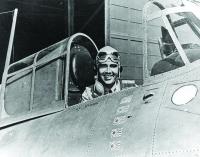
Butch O'Hare on his plane showing the five Japanese flags representing the five planes he shot down on February 20, 1942.
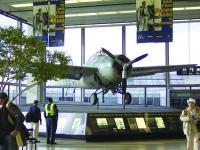
The Wildcat in Terminal Two of Chicago's O'Hare International Airport
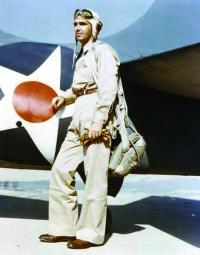
American Hero Butch O'Hare
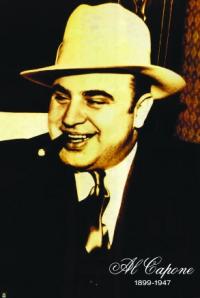
Al Capone

Butch O’Hare - F6F-3 1943
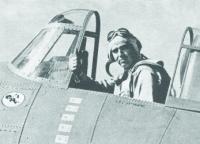
Japanese postcard commemorating sinking of HMS Prince of Wales & HMS Repulse.
This month, 70 years ago, our country got its first “Ace” of World War II.
Annually, millions of air travelers pass through Chicago's O'Hare International Airport. However, few are aware of the origin of the name of the facility which is helping speed them to their destinations. Fewer still are aware of the role of one Alphonse Capone in its name.
On March 13, 1914, Edward Henry “Butch” O’Hare was born in St. Louis, Missouri. His father was E. J. “Easy Eddie” O’Hare. At that time Easy Eddie was a lawyer whose most important client was Oliver P. Smith. Mr. Smith had invented the mechanical rabbit that is used at dog tracks the world over. Easy Eddie had helped Mr. Smith obtain a patent on his invention. Back then, dog racing was big in Massachusetts, Florida, and Illinois. When Smith died, in 1927, Easy Eddie wrested control of the patent from the widow, left his own wife, and moved to Chicago.
His association with dog track managers and owners had brought him into contact with Mr. Capone. Soon, he was a partner with “Scarface” in the Hawthorne Kennel Club, in the mob-controlled Chicago suburb of Cicero. After the law closed the dog track, the owners converted it to a thoroughbred track - Sportsman’s Park - with Easy Eddie as the president. In addition to those duties, Easy Eddie performed other “legal” services for the Capone organization.
Whatever his faults, Easy Eddie was a doting father. At about the time the Feds were turning up the heat on Capone, Butch was being graduated from high school, and wanted to further his education at the United States Naval Academy in Annapolis, Maryland. Easy Eddie was a guy that would do anything for his children, especially his son. So he cut a deal with the Feds. As a result, Capone went to Alcatraz and Butch went to Annapolis. In 1937, Butch was graduated from the United States Naval Academy, and was assigned to duty aboard the battleship USS New Mexico.
The bill for Butch’s education came due on November 8, 1939, when Easy Eddie was gunned down, as he left Sportsman’s Park in his 1939 Lincoln Zephyr. Several months later, Frank Nitti, Capone’s successor, married Easy Eddie’s fiancé, Ursula Sue Granata.
After two years aboard the battleship USS New Mexico, the young naval officer began flight training at Pensacola, Florida. In May 1940 he received his first carrier assignment - USS Saratoga. The following year, he transferred to the USS Enterprise. In July of that year, he met both his wife and the plane that would bring him immortality - the Grumman F4F-3 Wildcat. Within six weeks he was married, and he and his new bride, Judy, were on their way to Hawaii - Butch on the “Big E” and Judy on a cruise ship!
By February 1942, Lt. O'Hare was a Section Leader of Fighting Squadron 3, aboard the aircraft carrier U.S.S. Lexington.
These were dark days for our country and its allies. Much of our fleet lay at the bottom of Pearl Harbor. Four British battleships had also been sunk. In Libya, Germany’s vaunted "Desert Fox" and his Afrika Korps were on the offensive, recapturing Derna, Agedabia and Benghazi. And although the Red Army had relieved the pressure on Moscow with its winter offensive, the Wehrmacht still stood just 100 miles from the Soviet capital, and Leningrad was starving. During the “Channel Dash,” to the embarrassment of the Royal Navy, the Kriegsmarine moved the battle cruisers Scharnhorst and Gneisnau, the heavy cruiser Prinz Eugen and several destroyers through the English Channel, in broad daylight. German submarines sunk 150,000 tons of American shipping in January, off our coast. In February, Axis submarines sunk a total of 476,500 tons in the Atlantic, Mediterranean, and Carribean.
Meanwhile, in Asia, the Empire of the Sun was ascendant. Our forces in the Philippines were trapped in Bataan and Corregidor. Wake Island, after a heroic defense, had fallen. Hong Kong had been captured. Singapore surrendered, sending 130,000 Commonwealth soldiers into Japanese captivity. The Japanese invaded Burma and Malaysia. Kuala Lumpur was taken. Thailand declared war on the U.S. and U.K. Darwin, Australia, was attacked by Japanese warplanes. Rangoon was threatened, and would soon fall. Borneo, Sumatra and New Guinea were attacked. Bougainville Island, in the Solomons, was captured. An Allied fleet was destroyed at the Battle of Java Sea. America and its allies sorely needed a hero.
On February 20, 1942, the Lexington attempted an attack on the Japanese Naval base of Rabaul in the Pacific Ocean. During this attack, the carrier was itself attacked by nine Japanese bombers. Only two American fighters were available to defend the "Lady Lex." The guns on one jammed. Now only Butch O'Hare and his lone Wildcat stood between the Japanese and the carrier. It was his first combat mission. His plane only carried enough ammunition for 34 seconds of firing.
In four minutes, Lt. O'Hare shot down five of the enemy planes, and damaged a sixth, becoming the first American ace of World War II. Shortly after downing the fifth plane, a squad of Wildcats arrived to shoot down two more and chase the remaining two enemy bombers home.
For this display of courage, ability and determination, Butch O'Hare was awarded the Medal of Honor on April 21, 1942, by President Franklin Delano Roosevelt at the White House. He was the first naval aviator to be awarded the prestigious honor. The citation read as follows:
“For conspicuous gallantry and intrepidity in aerial combat, at grave risk of life above and beyond the call of duty, as section leader and pilot of Fighting Squadron 3 on 20 February 1942. Having lost the assistance of his teammates, Lt. O'Hare interposed his plane between his ship and an advancing enemy formation of nine attacking twin-engined heavy bombers. Without hesitation, alone and unaided, he repeatedly attacked this enemy formation, at close range, in the face of intense combined machine-gun and cannon fire. Despite this concentrated opposition, Lt. O'Hare, by his gallant and courageous action, his extremely skillful marksmanship in making the most of every shot of his limited amount of ammunition, shot down five enemy bombers and severely damaged a sixth before they reached the bomb release point. As a result of his gallant action - one of the most daring, if not the most daring, single action in the history of combat aviation - he undoubtedly saved his carrier from serious damage.”
On Saturday, April 25, 1942, a parade was held in his hometown of St. Louis. Sixty thousand cheered America’s new hero as he rode down Washington Avenue seated between his wife and mother in a Packard convertible. Knowing that he was a Lucky Strike smoker, the workers at the Grumman plant, in Bethpage, New York, where his Wildcat had been manufactured, took up a collection and bought him 1,150 cartons of Luckys. Butch responded by writing, “You build them, we’ll fly them and between us, we can’t be beaten.”
He was promoted two grades to lieutenant commander and, in June, given command of Fighting Squadron 6, flying the new F6F Hellcats. O’Hare’s heroics weren’t finished. In a battle near Wake Island, on October 5, 1943 he shot down two more bombers and a Zero. For this and his actions near Marcus Island on August 31, 1943, he received the Distinguished Flying Cross and Gold Star.
On November 27, 1943, while conducting the Navy's first night fighter operation near Tarawa in the Gilbert Islands, Lieutenant Commander O'Hare was lost during an attack on a Japanese bomber formation. He was posthumously awarded the Navy Cross. In addition to his wife and sisters, he left a two-year-old daughter. He was 29.
In June of 1945, the U.S. Navy launched a destroyer named for Butch, which served until 1973, when it was sold to Spain and renamed Méndez Núñez, in honor of a 19th century Spanish Admiral.
In 1949, to honor Butch O'Hare, the name of Chicago's airport was changed from Orchard Road to O'Hare. But its designation remains ORD, which you will see on your luggage tags. To honor the airport’s namesake, an F4F-3 Wildcat, like the one Butch flew, has been restored and is on display in Terminal Two, near the ticketing booth.
So, the next time you pass through Chicago's O'Hare Airport on your way to a nice vacation in Hawaii, or points west, remember Butch O'Hare and the other brave men who helped make it possible.
Among the items found on Easy Eddie’s body was a poem clipped from a magazine which read:
The clock of life is wound but once
And no man has the power
To tell just when the hands will stop
At late or early hour.
Now is the only time you own.
Live, love, toil with a will.
Place no faith in time.
For the clock may soon be still.
NEXT MONTH: THE DEMYANSK POCKET
Mr. Wimbrow writes from Ocean City, Maryland, where he practices law representing those persons accused of criminal and traffic offenses, and those persons who have suffered a personal injury through no fault of their own.
«Go back to the previous page.






